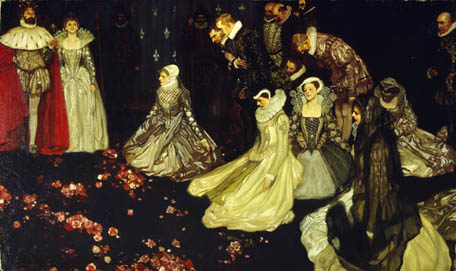Menu
The French presence in North America before 1603
Samuel de Champlain was not the first European to travel to what is now North America, nor was he the first to make an attempt at colonization in the St. Lawrence Valley. As early as 1500, European explorers began to visit the edges of the North American continent in search of fish, whales and other lucrative resources. These explorers met and traded with Aboriginal peoples and, in some instances, may have employed their services to render whales into oil.
In 1534, Jacques Cartier sailed from France to the St. Lawrence River and produced the first detailed account, from a European perspective, of the encounter between Aboriginal people and Europeans in 16th-century Canada. His second and third voyages occurred in 1535-36 and 1541. During his last voyage, an attempt was made to establish a colony under the leadership of Jean-François de la Rocque, Sieur de Roberval. After much suffering and death, the colony was abandoned in 1542. The issues and struggles associated with colonization, along with unfavourable predictions about possible wealth and the strain of the religious wars in Europe, halted French exploration in the St. Lawrence Valley for a time.
While fishers and whalers continued to operate on the river seasonally, it was not until the 1570s that the French were once again drawn to the St. Lawrence Valley, purely to engage in the fur trade, which became increasingly profitable as changes in European fashion demanded significant quantities of beaver pelts for the production of felt hats.
By 1598, traders operating in the St. Lawrence Valley began to realize and complain that increased competition was costing them profits. In response, the French government granted monopolies to commercial companies that would assume the costly work of exploration and settlement, as well as assert French sovereignty in the St. Lawrence Valley over other European powers.
One such monopoly resulted in the establishment of a French colony at Sable Island by Troilus du Mesgoùez, Marquis de la Roche-Helgomarche, which ultimately ended in disaster. In 1599, Pierre de Chauvin was granted a 10-year fur trade monopoly and commissioned to establish a colony in the St. Lawrence Valley. This attempt, at Tadoussac, also met with failure.
During this period of France’s renewed official interest in Canada, Champlain worked at the Louvre as a geographer for King Henri IV, and carefully studied these failed attempts at colonization and drew lessons from them. He also developed his own vision for exploration, settlement and religious conversion in what is now North America, while he waited for his own opportunity to make his first voyage to the continent.

